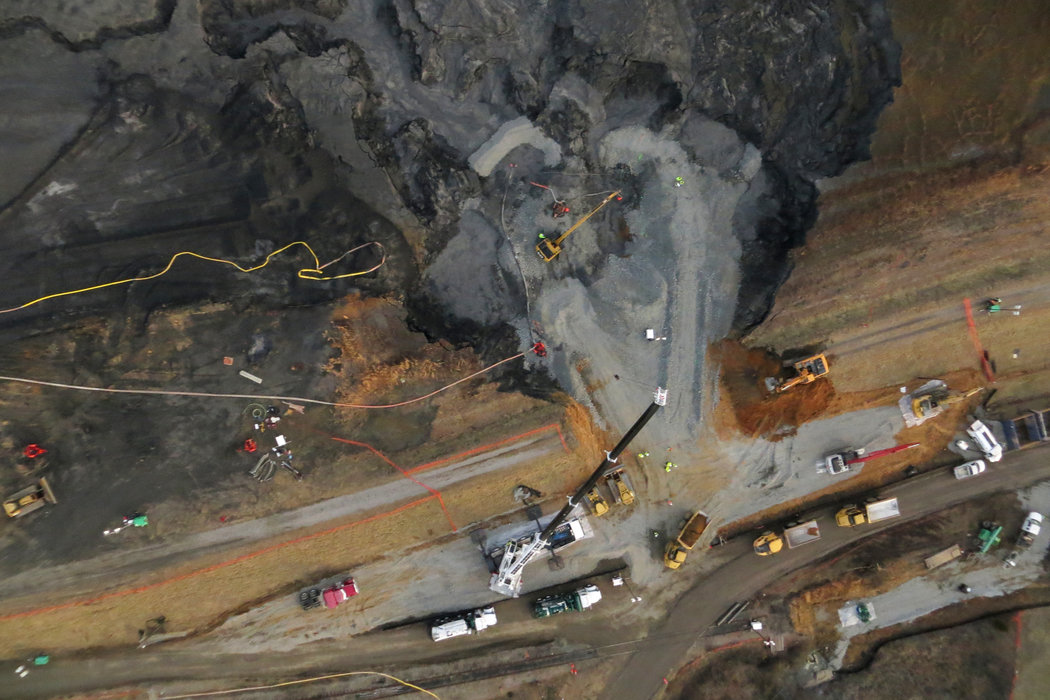As I travel this week to visit family in Tennessee for one last summer trip before the school year starts, I can’t put some work-related issues out of my head. I’m thinking of the massive coal ash spill near Harriman, Tennessee, in 2008, when more than one billion gallons of toxic coal ash swamped the 300 acres of land and the Emory and Clinch rivers after an ash dam at TVA’s Kingston coal plant failed. This year is the tenth anniversary of that disaster in my home state. Although Obama-era coal ash standards were a good first step toward helping to avoid future catastrophic spills, that hope was short-lived. A few days ago, the Trump administration and acting Environmental Protection Agency head Andrew Wheeler finalized their first new regulation to start rolling back the standards protecting our families and waterways from toxic coal ash.
Coal ash is the toxic waste left over from coal-burning power plants and contains some of some of the deadliest known toxic chemicals, including heavy metals like arsenic, lead, mercury, and chromium. For decades, coal ash disposal was subject to no EPA oversight, and this waste was dumped into giant unlined pits, where toxic chemicals then seeped into water and soil and blew into the air in many communities nationwide. Exposure to these toxics raises the risk for cancer, heart disease, and stroke, and can inflict permanent brain damage on children.
Despite the Sierra Club and partners like Earthjustice working closely to oppose the rollback of the Obama-era coal ash protections by Trump and Scott Pruitt (which they announced one day after new data required by the Obama rules revealed widespread toxic water contamination near coal ash disposal sites), Trump and Wheeler chose to again listen to their coal buddies. They ignored the stories and pleas from families affected directly by coal ash pollution. Our groups collaborated in flying-in and driving-in people from communities affected by coal ash to testify at the EPA’s hearing in the D.C. area earlier this summer.
So what’s next for the coal ash standards? The rollback that EPA just finalized gives polluters an extra 18 months to close leaking coal ash ponds, which is more time for Wheeler’s EPA to further weaken the rule and potentially exempt more coal ponds from closure requirements altogether. In the meantime, the rollback allows utility companies and other coal ash generators to keep dumping toxic waste into leaking, unlined pits.
The rollback also revises existing groundwater protection standards for certain coal ash contaminants -- including lead, for which there is no safe level -- thereby allowing polluters to continue dumping even if lead, cobalt, lithium, or molybdenum is found in groundwater. It allows utilities or generators to stop groundwater monitoring altogether if they demonstrate that their groundwater pollution won’t migrate off site or into a waterbody. It also gives state political appointees, not technical experts or professional engineers, the ability to terminate groundwater monitoring.
We are not done fighting this rollback. We will not allow the Trump administration to give carte blanche to well-funded polluters that threaten the water of thousands of communities across our country with their toxic coal ash. There should never be another coal ash spill like the ones in Tennessee and in North Carolina’s Dan River, and we must end ongoing coal ash groundwater contamination that threatens hundreds of communities nationwide. We’ll use every means we have to beat back this latest attempt to weaken basic clean water protections for working families, farmers, and outdoor businesses -- whose lives and livelihoods are being threatened by coal ash every day.
